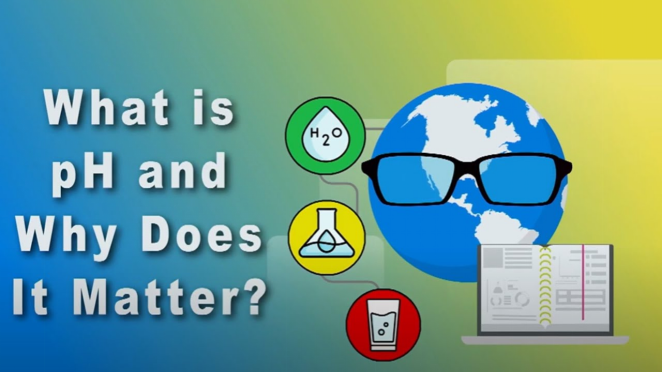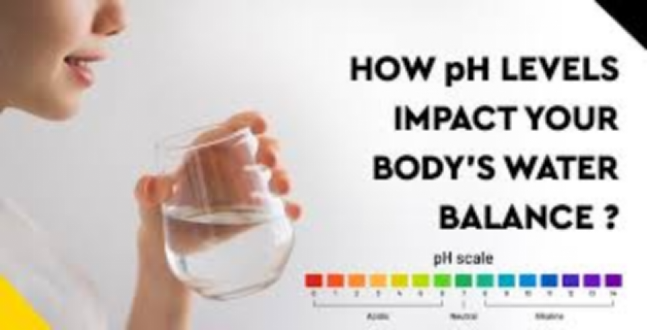Water is essential for life, but not all drinking water is the same. One of the key factors that influence the quality of water is its pH level. The pH level of water can affect its taste, health benefits, and overall impact on your body. But what exactly is pH, and what is the ideal pH level for drinking water? In this article, we will explore the importance of pH levels in drinking water, their effects on health, and the best options for safe and balanced hydration.

1. What Is pH and Why Does It Matter?
Understanding the pH Scale
The pH scale measures how acidic or alkaline a substance is, ranging from 0 to 14:
0-6.9: Acidic
7: Neutral
7.1-14: Alkaline (Basic)
Pure water has a neutral pH of 7, meaning it is neither acidic nor alkaline. However, the pH level of drinking water can vary depending on its source, treatment processes, and mineral content.
How pH Affects Drinking Water
The pH level of water influences:
Taste: Acidic water (pH below 7) may taste sour or metallic, while alkaline water (pH above 7) can taste smooth and slightly sweet.
Health: Extremely high or low pH levels can cause potential health issues.
Water Quality: Acidic water may corrode pipes and leach metals, while high alkalinity can cause scaling in plumbing.
What Are the Typical pH Levels of Different Water Sources?
Different water sources have varying pH levels based on their composition and treatment. Here are some common types of drinking water and their pH levels:
- Tap Water (Municipal Water): pH 6.5 to 8.5 (Varies by region)
- Bottled Water: pH 6 to 8.5 (Depending on brand and mineral content)
- Natural Spring Water: pH 6.5 to 8.5 (Depends on the source)
- Reverse Osmosis (RO) Water: pH 5 to 7 (Slightly acidic due to purification)
- Alkaline Water: pH 8 to 10 (Enhanced with minerals or electrolysis)
3. The Effects of pH on Your Health
Acidic Water (pH Below 7)
Drinking water with a low pH can have negative effects, including:
- Tooth Enamel Erosion: Acidic water can wear down tooth enamel over time.
- Metal Contamination: Low-pH water can corrode pipes, increasing exposure to heavy metals like lead and copper.
- Digestive Issues: Extremely acidic water may cause discomfort for people with acid reflux or sensitive stomachs.
Alkaline Water (pH Above 7)
Alkaline water has gained popularity due to its potential health benefits. Some of the claimed benefits include:
- Neutralizing Acid in the Body: Some believe that alkaline water can help balance acidity in the body and reduce acid reflux.
- Hydration and Detoxification: Alkaline water is said to be more easily absorbed by the body, improving hydration.
- Antioxidant Properties: Some alkaline water contains negative oxidation-reduction potential (ORP), which may help neutralize free radicals.
However, excessively high pH levels (above 10) may lead to:
- Digestive Discomfort: Too much alkalinity can upset the stomach.
- Skin Irritation: High pH water may cause dryness or irritation in some individuals.

What Is the Best pH Level for Drinking Water?
According to the U.S. Environmental Protection Agency (EPA) and the World Health Organization (WHO), the ideal pH range for drinking water is 6.5 to 8.5. This range ensures that the water is safe, free from harmful contaminants, and pleasant to drink.
Here’s a guide to choosing the right pH level based on your needs:
| pH Level | Type of Water | Best For |
| 6.5 – 7.5 | Neutral Water | General hydration and daily drinking |
| 7.5 – 8.5 | Slightly Alkaline Water | People with acid reflux or digestive concerns |
| 8.5 – 9.5 | Alkaline Water | Athletes, detoxification, and hydration improvement |
| 9.5+ | Highly Alkaline Water | Short-term detox (use with caution) |
How to Adjust and Maintain the Right pH in Your Drinking Water
How to Raise the pH of Water (Make It More Alkaline)
If your water is too acidic, you can increase its pH using:
- Alkaline Water Filters: These filters add minerals like calcium and magnesium to raise pH levels.
- pH Drops: Liquid drops containing alkaline minerals can be added to drinking water.
- Baking Soda: A small amount of baking soda can temporarily increase pH.
How to Lower the pH of Water (Make It Less Alkaline)
If your water is too alkaline, you can lower its pH using:
- Reverse Osmosis (RO) System: RO filtration removes alkaline minerals, reducing pH.
- Adding Lemon or Vinegar: Natural acids like lemon juice can slightly lower pH.
Should You Drink Alkaline or Neutral Water?

Both neutral and slightly alkaline water are considered safe and beneficial. However, the best choice depends on individual health needs:
- If you have acid reflux or high acidity in the body, alkaline water (pH 7.5 – 9) may help.
- If you prefer balanced hydration, neutral water (pH 6.5 – 7.5) is ideal.
- If you engage in high-intensity exercise, slightly alkaline water may aid in hydration and recovery.
Conclusion: Finding the Right Balance
The pH level of drinking water plays a crucial role in its taste, quality, and health effects. While neutral water (pH 6.5 – 7.5) is generally the safest and most recommended, some people prefer slightly alkaline water (pH 7.5 – 9.5) for potential health benefits.
Regardless of the pH level, ensuring that your water is free from contaminants, properly filtered, and safe to drink is the most important factor. By understanding your body’s needs and using proper water filtration methods, you can maintain optimal hydration and well-being.
----------------------------------------------------------------------------------
SANAKY VIETNAM., CO LTD- Manufacturer of Power, Distribution and Dry-type Transformer as well as RO Water Purifier, Chest Freezer - Upright Cooler, ...
☎ Hotline: (+84) 986 484 544
? hank@sanaky-vn.com
? www.sanaky-vn.com
 Vietnamese
Vietnamese  English
English  Chinese
Chinese  French
French  Spanish
Spanish  Russian
Russian  Arabic
Arabic  Portuguese
Portuguese